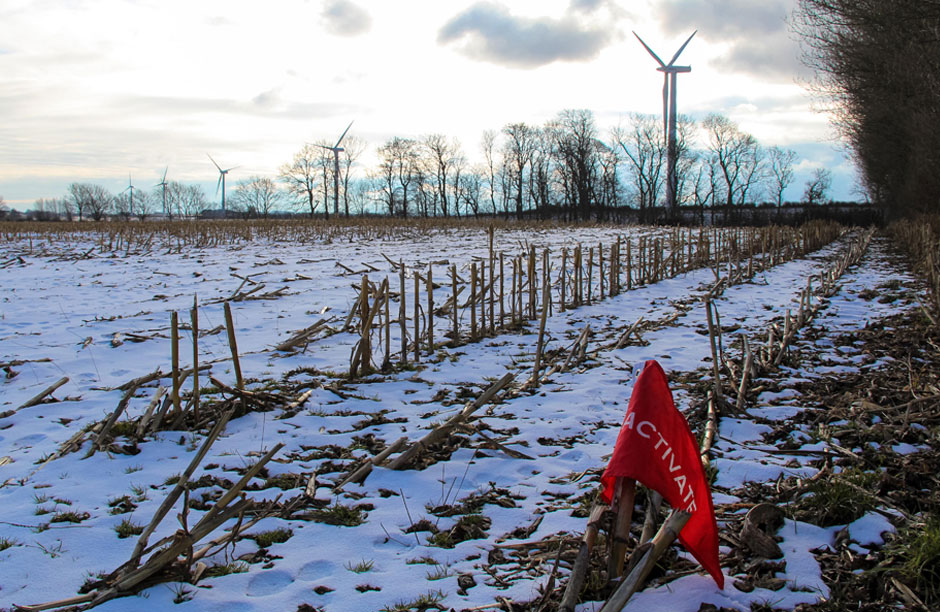PROJECT
Flag #12: Denmark
Location: Samsø, Denmark
Name: Roop Gill
Nestled in the Kattegat Strait between the Baltic and North seas is the small, sparsely populated Danish island of Samsø, lovingly known as the “Energy Island.” Home to beautiful beaches, holiday homes of many Danes, and a popular music festival in the summer, Samsø garners most of its popularity for something else – it’s remarkable successes in being self-sufficient on renewable energy.
This picture was taken on Jørgen Tranberg’s farm, the rear of which leads up to his wind turbine. In 1998, when the Samsø municipality invited island residents to buy shares in the 21 wind turbines that supply a hundred percent of the island’s energy, Tranberg thought it was a good investment. When Tranberg moved from the mainland of West Jutland to this small island over 30 years ago, he started off with buying a small, inexpensive farm. Since then, Tranberg has made the most of the opportunities available to him on this small island of 4,300 inhabitants, like investing in the wind turbines that started as an ambitious project over a decade ago.
In 1997, the Danish government launched a contest to award a community with funding to become a model for sustainable energy. Samsø’s mayor entered the contest and won. He aimed to make this island completely self-sufficient over the next 10 years by using only renewable energy on Samsø. Even though around $90 million was poured into this project over the next decade to help the island achieve its goals, according to Michael Larson at Samsø’s Energy Academy, it was the people of the municipality that made this project happen. Many of them, like Tranberg, have shares in one of the 21 turbines towering over the island’s stunning landscapes.
“People all over the world are talking about public-private cooperation and innovation, and we already did that 15 years ago in Samsø,” notes Larsen.
Samsø was beyond successful in reaching its goal by 2008 and is now a 100-per-cent self-sufficient, running on soley renewable energy sources. Moreover, 75-per-cent of the heat energy produced on this cold, Scandinavian island is renewable as well. The island of Samsø now has a new goal: to be completely fossil fuel free by 2030 by phasing out coal, oil or gas used for energy production or transportation.
Folks at the Energy Academy in Samsø also consult other municipalities in their efforts to become more sustainable. Larsen is confident that with community contribution, any place could achieve a high level of sustainable energy production.
In the meantime, the wind turbines in Samsø are turning away, producing 66-per-cent more energy than the island needs, while topping off the bank accounts of local shareholders.
